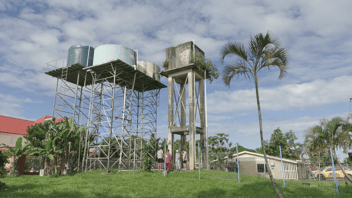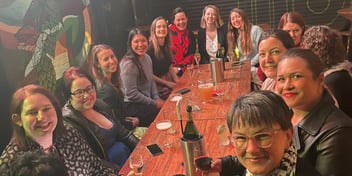Sustainable water management is essential with resources becoming constrained
The impending crisis in Cape Town shows the importance of sustainable water management in a world with increasingly constrained resources, according to Aurecon Group Global Services Leader for Water Dr James Cullis.
Presenting at the upcoming Ozwater’18 conference on the outcomes of the World Bank’s Thirsty Energy Initiative case study from South Africa, Cullis said with the water crisis facing Cape Town a case in point, long-term planning is critical to ensure sustainable water management in the future.
According to Cullis, integrated water and energy planning is becoming more important as resources are becoming constrained.
“With increasing demands and decreasing resources, plus the added stresses of climate change, it’s becoming more important to better understand the interaction between water and energy and to plan these together,” Cullis said.
“Decisions made in one space impact the other; they are two sides to the same equation.”
In order to address challenges presented by energy and water resource planning, the World Bank launched the Thirsty Energy Initiative in 2014, including a number of case studies from around the world.
“South Africa was selected, given its long history of integrated water resources planning and parallel process of energy planning, both in the context of increasing water and energy demands, increasing scarcity and climate change risks,” Cullis said.
The South African case study, led by the University of Cape Town’s Energy Resource Centre, set out to create a new model for managing water and energy, one which took into consideration spatial divergence between energy resources and water availability and supply costs.
Aurecon provided inputs on the water resources challenges and integration of the water and energy nexus.
"Previously, the energy planning model included all the energy technologies, with water costed based on quantity used according to different technologies' water use efficiencies. But the unit price for water has tended to be the same for all energy technologies irrespective of their physical location and challenges with regards to local water availability," Cullis said.
“They had an average national price for water and applied this across the board. The only difference was the amount of water used. But a lot of new energy infrastructure is beginning to access water in different ways. There is a big difference in the cost of conveying water in different places to where the different energy options are located.
“If you recognise the spatial difference, you recognise that there is a cost incurred in aligning that mismatch. Certain energy options are now more expensive if we take into account the real cost of water supply, rather than costing energy based on one standardised water price.”
Cullis said the new model aims to reveal how water might be more equitably applied, depending on energy resources available, thereby highlighting areas were policy or management might shift towards more sustainable usage.
“The model looks forward to 2050, anticipates what the energy demand is and then tries to pick the best mix of energy going forward, and brings in technology changes and different demands. The model works out what the optimal energy mix is based on the real cost of water,” Cullis said.
“How do you balance that spatial and temporal mix with both the water and energy sector to optimise planning in both spaces? It’s becoming more and more important to think of water while planning for energy, and energy while planning for water.”
Cullis also said accessing more granular information about water costs and how it should be priced in light of different energy options is crucial to long-term energy and water management planning and ensuring short-term decision making during water crisis should stay on the right track.
“South Africa is in the midst of the equivalent of the Millennium Drought that happened in Australia. We’ve had four years of well below average rainfall. We are finding that we are hitting the limits of our systems,” Cullis said.
“One of the challenges is often a lack of information for decisions to be made, and then waiting until you’re in a crisis before making these important long-term decisions. The challenge is about getting at the long-term planning before having to make short-term decisions.”
Register for Ozwater’18 to hear more from Aurecon Group’s James Cullis on integrated thinking and planning for sustainable water-energy management.
Related video:
https://www.youtube.com/watch?v=reyyrKRRmeI


.jpeg?width=352&name=WhatsApp%20Image%202024-10-01%20at%203.52.48%20PM%20(3).jpeg)
